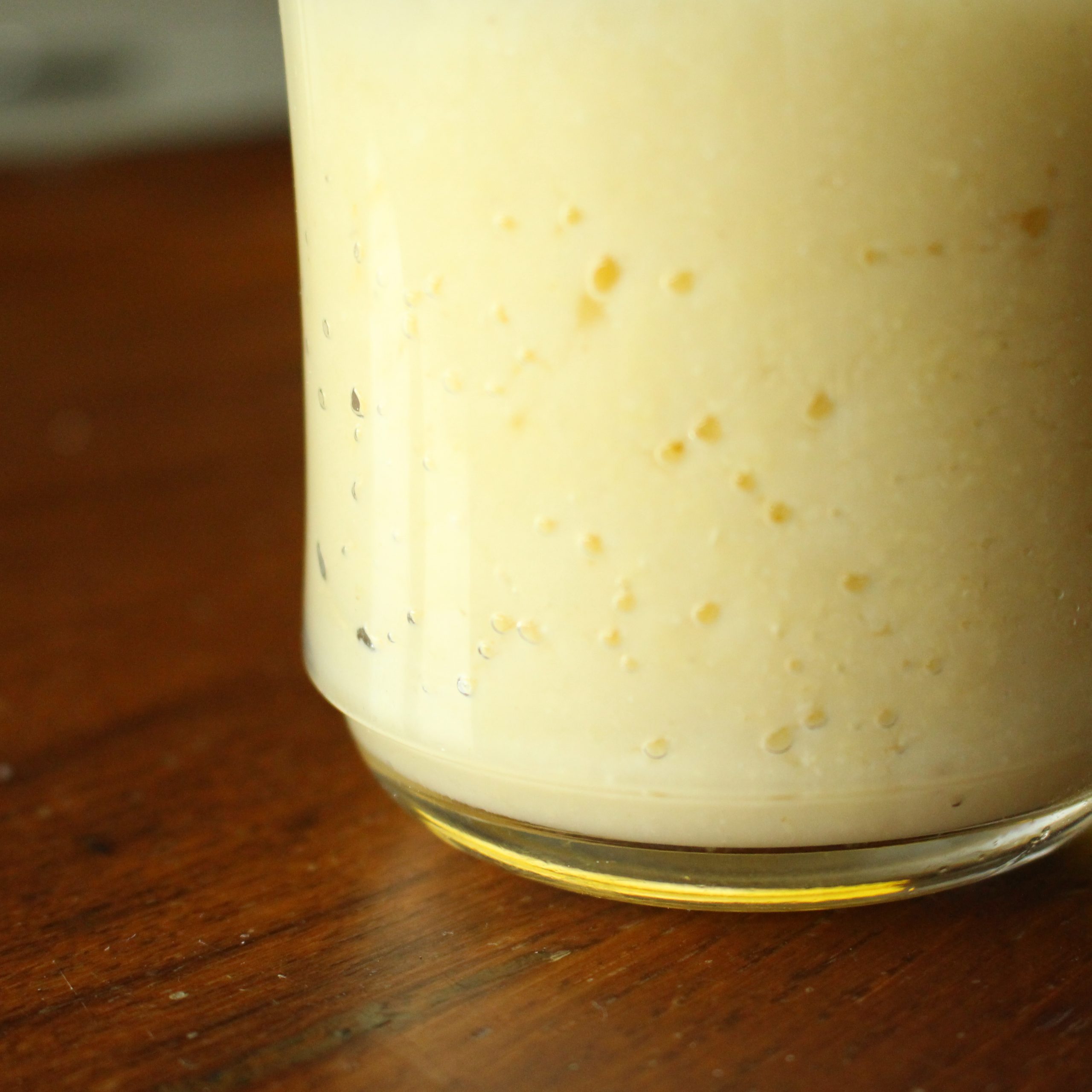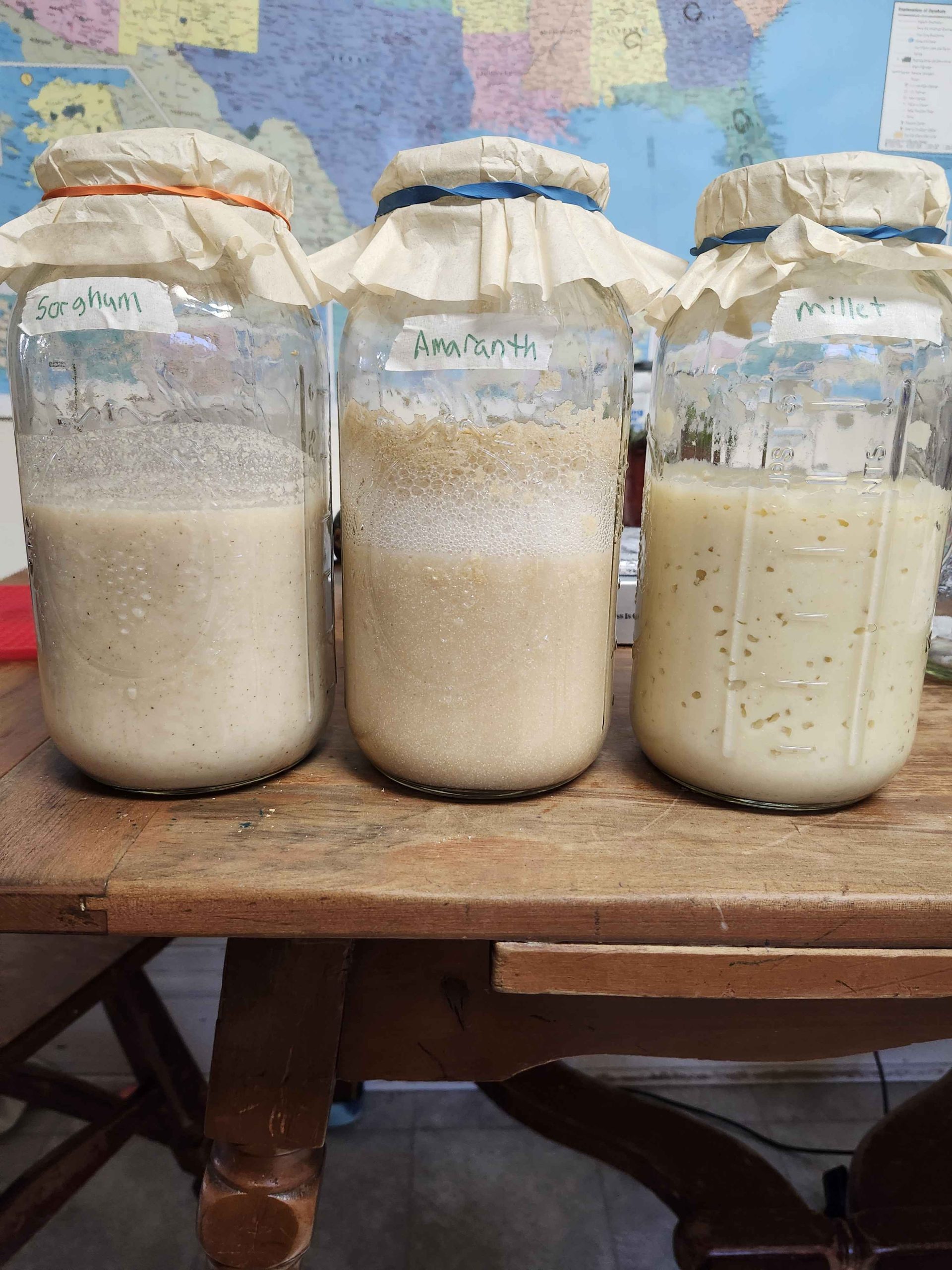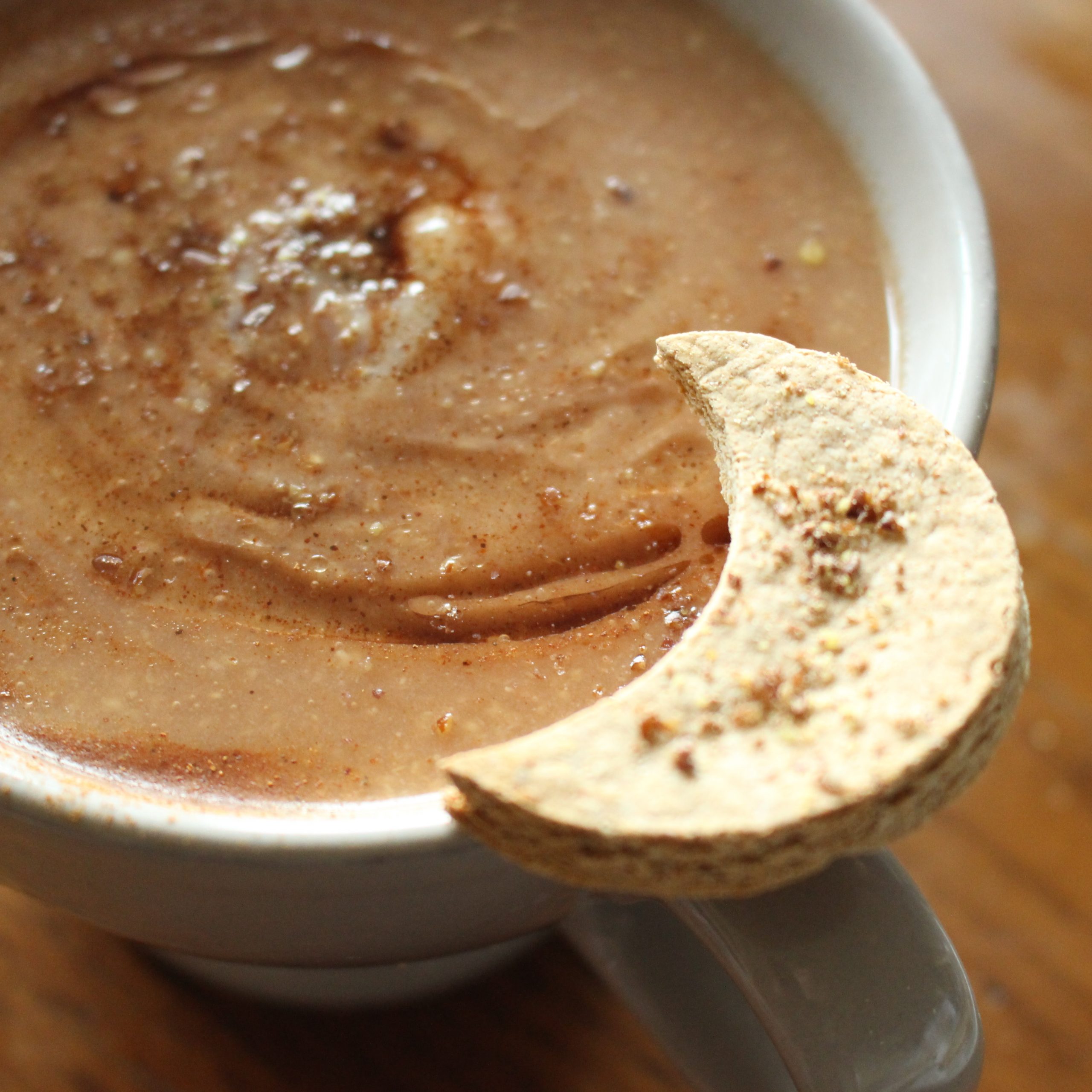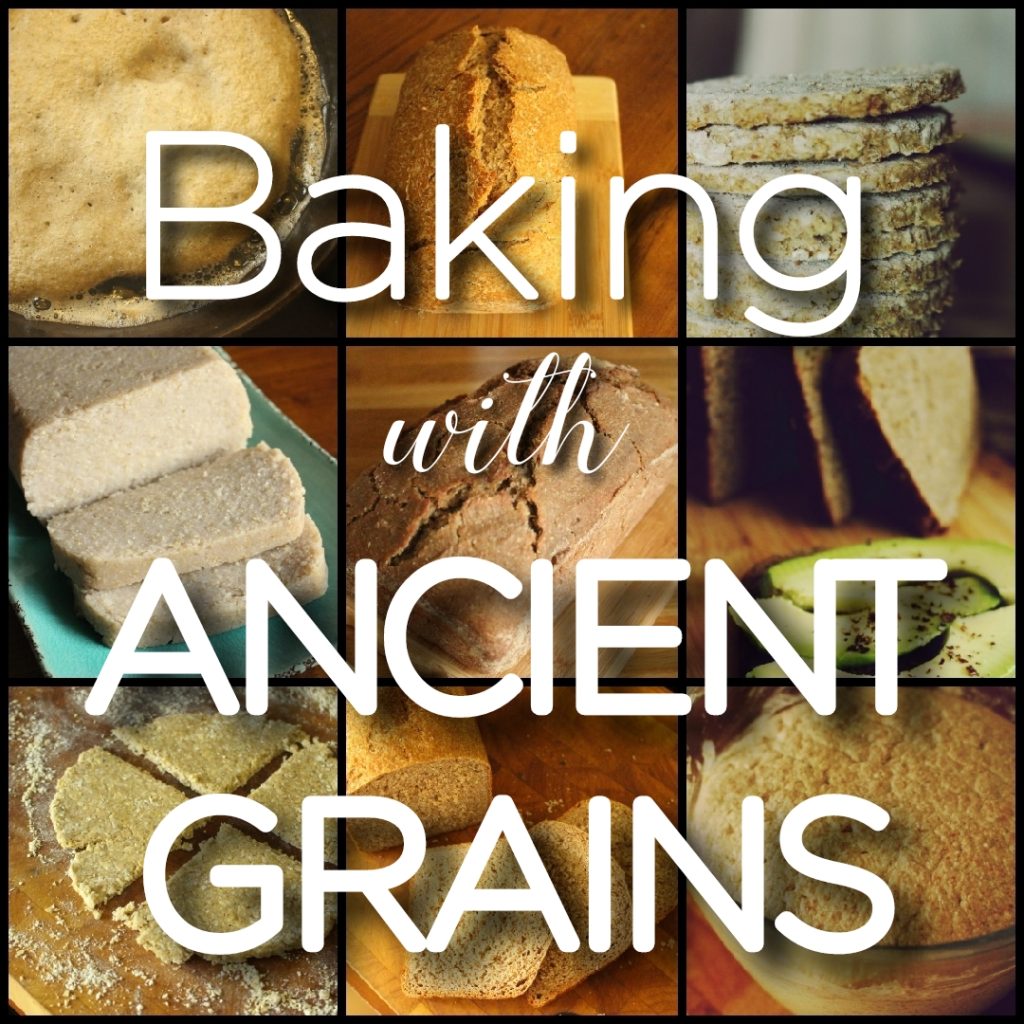I regularly make the fermented drink, boza, in my kitchen. It’s fun, tangy, fizzy and really satisfying as well as being probiotic.
I love it and want everyone to be enjoying it, but I’ve noticed that most people have never heard of boza. Hence this post! In it, I’ll explain what the drink boza is, its history, how it’s made and what it tastes like.

What is boza?
Boza is a fermented drink that is native to the European regions we now call Turkey, the Caucuses and the Balkans. Made with millet, it’s gluten-free, dairy-free and, thanks to the fermentation, probiotic. It’s thick, fizzy, tangy and deeply satisfying.
What is the history of boza?
The first time the word ‘boza’ is recorded as being used to describe a fermented drink was the 14th century, but, incredibly, fermented millet drinks have been made since the 9th century BCE, meaning that a drink really similar to boza has been around for 11,000 years!
The heyday of boza was during the Ottoman Empire. A 17th-century traveller to Istanbul reported that the city housed 300 boza shops that employed over a thousand people!
There are still shops selling boza in Istanbul, one of the most famous being Vefa, which was founded in 1876 and is now run by the original owners great-great-grandchildren. You can see the shop here.
As well as being available in shops, boza has a long history of being sold by street vendors, who would wander the streets of Istanbul carrying boza in metal containers hung on milk pail-style apparatus. They had a very distinctive call. You can watch a short clip of one here.
If you’d like to read more about the environment in which boza-sellers worked, the main character in Orhan Pamuk’s 2014 novel A Strangeness in My Mind (a book that was shortlisted for the 2016 International Booker Prize) is a Turkish boza-seller.

What is boza made of?
The earliest records of boza-style fermented drinks used the grain millet. As the drink has travelled to different geographies and been influenced by changing crops, it is now often made with other grains such as corn or wheat.
I use millet in my own kitchen to make boza which creates a drink which is not only dairy-free but also gluten-free and lectin-free. Students of my boza course have also made the fermented drink with sorghum, amaranth and teff (as you can see below!).

Why should I make boza at home?
Boza is a simple, inexpensive drink to make and one that is exciting, delicious and probiotic. It’s great to have in the fridge when you want a healthy snack to turn to. In addition, if you’re looking to bring more probiotics into your life, making and consuming boza is a way that you can do this without relying on dairy, gluten, lectins or, importantly, expensive shop-bought beverages or tablets.
How do you make boza?
To make boza, hulled, cooked millet is mixed with yeast and left to ferment. The microbes doing the fermentation produce acids which make the drink tangy along with small amounts of alcohol.
What yeast can I use to make boza at home?
Some people use packets of commercial yeast in the boza-making process (and this is how boza is made in shops today).
Some experiment with sourdough starter, but I find this creates a drink that is too sour.
I choose to create my own starter full of natural yeasts using a small amount of cooked millet and some sugar. I then inoculate a bigger batch of cooked millet with this home-made starter, which ensures delicious results!
“I’m so impressed with this course. I’d never even heard of boza and now I’m addicted to it!” Deb, student of my course Boza: The Probiotic Millet Drink
What does boza taste like?
Boza is sweet, fizzy on the tongue, tangy and slightly sour. The cooked millet adds a creaminess to the drink too. You can vary the thickness (by adding more or less water) depending on your preference but it is generally a satisfyingly-thick drink which can also be eaten with a spoon.
Boza has generally become sweeter over time. Historically it was a more sour drink. My own method produces a drink that balances the sweet and sour flavours – I think the boza in my home is probably much less sweet than the boza you can currently buy in Istanbul.

What is the alcohol content?
The alcohol content of boza is low. In Turkey there is legislation saying that it cannot be greater than 2%. In my experience, when making boza at home, the alcohol content is much lower. General agreement states that home-made boza is less than 1% alcohol.
How is boza traditionally served?
Historically, boza has been served in the winter. This is because without refrigeration it was difficult to stop the drink over-fermenting in warm summer temperatures.
In addition, traditionally boza is seen as a warming and nourishing drink (even though it is served cold).
If you go to Istanbul today and buy boza, it will be served with roasted chickpeas and cinnamon on the top.
What are some other ways of serving boza?
In my home, boza is most often drunk (or eaten with a spoon) as a snack. My husband and son love it when they return home after a walk or an energetic trip out.
We consume it cold. In the summer, it’s really refreshing. In the winter, the thickness and fizzyness is very satisfying.
Here are some other ideas for serving boza:
- Top it with ground linseed or toasted nuts
- Use it as a yogurt alternative to top fruit or oatmeal/porridge
- Gently heat it up and sip it from a mug whilst warming your hands
- As a base for smoothies: Boza makes a brilliant non-dairy base for a probiotic smoothie. We like to add egg yolks, linseed, fruits or cocoa powder!
- Boza popsicles: Freeze boza in popsicle moulds for a delicious, healthy summer treat.

If you’d like to make boza in your own kitchen check out my step-by-step video course here

Bring ancient grain baking into your kitchen!
Download my free 30-page guide with five healthy and tasty 100% ancient grains recipes.



So far, in the last 15-20 years, I have tried to make boza drink at home from corn meal, millet and wheat combined; it was successful and tasty fermented boza! I liked the article on boza and the history.
Thank you for your note, this is great to hear. Boza is a unique and tasty drink! We make some every week and love it.